About
Visit
Museum
Photos
Video
News
Events
CLOSED - Third St. Entrance and Exit. Please use State St. doors.
Guided tours on Saturday, Nov. 1 are at 2 and 3 p.m.



STATEHOUSE NEWS

The Ohio Statehouse will celebrate Earth Day by offering a FREE fossil tour on Capitol Square. The special tour will take place Friday, April 18 from noon until 1 p.m. The tour will depart from the Map Room, located on the ground floor of the Ohio Statehouse. Participants will explore the building stones that make up the Ohio Statehouse and Senate Office Building. The tour will be conducted by Dale M. Gnidovic, curator of the OSU Orton Geological Museum, and Mike Angle, assistant division chief at ODNR Division of Geological Survey. While the event is free, participants are asked to RSVP to Luke Stedke at lstedke@csrab.state.oh.us or 614/728-2130.
The Ohio Statehouse is constructed of Columbus Limestone. Columbus Limestone is of the Middle Devonian age and was named for the city where it has long been quarried. A large vein of Columbus Limestone formed in a north-south line, from the Glacial Grooves of Kelleys Island in Lake Erie, south to Columbus, Ohio. Four hundred million years ago the limestone was the sandy bottom of a tropical ocean that covered the state. Fossils of marine animals are abundant in Columbus Limestone and can be seen throughout the Capitol Square complex.
To view this press release and others, visit www.ohiostatehouse.org.
# # #
Members of the Capitol Square Review and Advisory Board (CSRAB) will meet Wednesday, April 9, 2014 at the Ohio Statehouse in downtown Columbus. The business meeting will be held in the State Room (room 108) and will begin at 10 a.m. The meeting is open to the public. The meeting agenda is available upon request.
# # #
The Ohio Statehouse Museum Education Center (OSMEC) is seeking enthusiastic volunteers to participate in its volunteer program. The OSMEC serves nearly 80,000 visitors a year from across the state, country and globe. Volunteers are sought to guide tour groups, including school children, through the Ohio Statehouse and the Ohio Statehouse Museum. Other volunteer opportunities include historical interpreters, museum shop assistants and program assistants.
The Ohio Statehouse is an exciting place to volunteer: the building is beautiful, the history is fascinating, and the law-making is intriguing. Interested individuals should have a love of Ohio history, art and architecture, and government. Successful candidates should enjoy working with people and have the availability to commit approximately 50 hours of volunteer service over the course of a year. Candidates must be at least 18 years old and must be comfortable with walking and stair climbing. Prior museum or tour experience is not required.
Volunteers will receive training about tour and museum content, the history and architecture of the Ohio Capitol, as well as the workings of state government. Training will also cover the most effective way to relate information in an interesting and engaging manner to a wide variety of audiences. Volunteers do not receive financial compensation, but they are offered discounts in the Statehouse Museum Shop, free parking and other benefits.
Detailed information and volunteer application are available at www.ohiostatehouse.org, direct link, https://docs.google.com/forms/d/1kZqF7ggJFdhTOnlo-f82ZY0InOBS0j3_z7AT83Ihibs/viewform or by contacting Dayna Jalkanen at 614-728-2697 or djalkanen@csrab.state.oh.us.
About the Ohio Statehouse Museum:
The Ohio Statehouse Museum includes interactive, hands-on exhibits that will challenge visitors’ knowledge about Ohio history and the workings of state government while equipping them to more fully participate as citizens. Historical artifacts and images will tell the stories of those who designed and built the Statehouse and those who have come to serve.
The Statehouse is the heart of Ohio’s democracy. Statehouse anecdotes, quotes from historical and contemporary figures, and statements will test visitor knowledge. Graphics and stories communicate the power of the Statehouse and its important role in the lives of Ohio citizens. Imagery shows historical and contemporary legislators while interpreting the Statehouse as democratic symbol, centerpiece and working center of government.
About the Ohio Statehouse:
The Ohio Statehouse is one of America’s finest examples of Greek Revival architecture and is one of the oldest working statehouses in the United States. The Ohio Statehouse was completed in 1861 after 22 years of construction. Restored to its original grandeur in 1996, the Statehouse is filled with priceless historic art, including a marble bust of Abraham Lincoln – one of only a few the President posed for during his lifetime. Even the Statehouse’s expansive grounds have a history, as Civil War Union soldiers frequently camped there.
To view this press release and others, visit www.ohiostatehouse.org.
# # #
The Capitol Square Review and Advisory Board (CSRAB) announces that the Statehouse Museum Shop is sponsoring a T-shirt design contest. The Statehouse Museum Shop is looking for a vibrant, eye-catching, unique design that can be used on a T-shirt and sold in the Statehouse shop starting in the summer of 2014. “Ohioans are innovative and creative people. CSRAB wants to promote and highlight that creativity through the Ohio Statehouse T-shirt Design Contest,” said William E. Carleton, executive director of CSRAB.
The winner will receive:
- A T-shirt with the winning art
- One $25 gift card from the Statehouse Museum Shop
- A private tour of the Ohio Statehouse including the Cupola for up to 10 people
Contest Overview
All entrants must live in the State of Ohio, and entries must be received by April 30, 2014. Semifinalists, selected by the T-shirt design committee, will be announced May 5, 2014. At that time, the semifinalists’ designs will be posted on the Ohio Statehouse Facebook page, the Statehouse Museum Shop Facebook page and the Statehouse Museum Shop Pinterest page where visitors can “like” their favorite design. Additionally, the semifinalists’ designs will also be on display at the Statehouse Museum Shop where visitors can cast a vote for their favorite design, all public voting ends May 23, 2014. The T-shirt design committee will consider the public voting results when selecting the winner. The winning design will be announced June 2, 2014 and will be on display in the Statehouse Museum Shop, T-shirts with the winning design will be on sale this summer.
Contest rules and entry form are attached to this communiqué. For further contest details and to view this press release, please, visit the Ohio Statehouse website at www.ohiostatehouse.org.
###
The Capitol Square Review and Advisory Board (CSRAB) launched a redesigned and upgraded public website Monday. The new streamlined website is more intuitive, and consolidates information, previously scattered on five independent websites, to a single one stop shop for all things Statehouse and Capitol Square. The Ohio Statehouse website address has not changed— www.ohiostatehouse.org.
William E. Carleton, executive director of CSRAB said, “With technology evolving at break-neck speed, it is important for public institutions to keep pace with technological advances to engage the public, and better serve their needs. The new Statehouse website is an online clearinghouse for Ohioans, and visitors from around the world, to learn about Ohio government, history and art. This new website helps CSRAB educate the public, facilitate the work of state government and protect the historical integrity of this great edifice.”
With a clean design and more easy to use navigation, the new Statehouse website delivers more information to the visitor quicker. “Since every Ohio student cannot visit the Statehouse on an annual basis. The new website has been redesigned to take the Statehouse to the student to engage and inspire the next generation of Ohio leaders," said Luke Stedke, communications and marketing manager for CSRAB. The upgraded website has four new sections that organize the site by topic with drop down tabs to further educate the visitor on the specific subject he or she has researched. Specific website upgrades include:
- One consolidated website for CSRAB and the Ohio Statehouse
- A searchable Online Collection Catalog,” for a deep dive into Ohio Statehouse history
- Technology upgrades to facilitate more efficient communication with Ohio citizens
The Ohio Statehouse website redesign was led by Luke Stedke CSRAB communications director, and Mike Rupert CSRAB communications specialist in association with the fantastic team at Legislative Information Systems (LIS).
The view this press release and others, visit www.ohiostatehouse.org.
###
The Capitol Square Review and Advisory Board and James A. Garfield National Historic Site (National Park Service) will honor the 20th President of the United States Tuesday, March 11, 2014 in the Ohio Statehouse Rotunda. Dr. Todd Arrington, chief of interpretation and education for James A. Garfield NHS, and Andrew Mizsak, master volunteer ranger, will conduct two historical presentations at 10 a.m. and 2 p.m. in the Rotunda of the Ohio Statehouse. The Ohio Channel will live stream the 10 a.m. presentation at: http://www.ohiochannel.org/index.aspx
James A. Garfield was born in Cuyahoga County (Orange Township), Ohio, in 1831. The last of the “log cabin Presidents” Garfield was a voracious reader as a youth and a natural academic. Upon graduation from Williams College in Massachusetts in 1856 Garfield returned to the Western Reserve Eclectic Institute (now Hiram College) as a classics professor and was later president of the institution.
Garfield was elected in 1859 to serve in the 54th Ohio General Assembly from 1860-1861, representing Portage and Summit counties. With the start of the American Civil War, Garfield organized the 42nd Ohio Volunteer Infantry in Aug. 1861. In Dec.1863, Garfield resigned from the Army to take his seat in the U.S. House of Representatives. At the time Garfield was the youngest major general in the Union Army.
Arrington and Mizsak will highlight Garfield’s contribution to the state of Ohio prior to his ascension to the presidency in 1881. This is a wonderful opportunity to learn about a “Great Ohioan.” The presentation is free and open to the public.
The view this press release and others, visit www.ohiostatehouse.org.
###
The Ohio Statehouse will celebrate Women’s History Month, March 1 – 31, 2014, with tours of the Ladies’ Gallery and a special women’s suffrage movement retrospective presentation March 13 at noon in the Governor Thomas Worthington Center.
Elizabeth Cole Clark from the Harriet Taylor Upton House in Warren, Ohio, will give a talk on the Ohio women’s suffragette movement and Harriet Taylor Upton’s involvement. The Upton House served as the temporary center of the National American Woman Suffrage Association in 1903 and remained there until 1905 when the headquarters relocated to the Trumbull County Courthouse.
Tours of the Ladies’ Gallery will be offered to Statehouse visitors throughout March. The Ladies’ Gallery pays homage to Ohio’s first six women legislators who paved the way for women in government. The room also honors all women who have served in the Ohio General Assembly.
About the Ladies’ Gallery
After ratification of the 19th to the U.S. Constitution in 1920, women gained the right to vote. Six capable and determined women were elected to the 85th Ohio General Assembly in 1923. Serving in the Ohio House of Representatives were Nettie McKenzie Clapp, Cuyahoga County; Lulu Thomas Gleason, Lucas County; Adelaide Sterling Ott, Mahoning County; and May Martin Van Wye, Hamilton County. Serving in the Ohio Senate were Nettie Bromley Loughead, Hamilton County; and Maude Comstock Waitt, Cuyahoga County.
About Harriet Taylor Upton
Harriet Taylor Upton was born Dec. 17, 1853, in Ravenna, Ohio. At 7 years of age, her family moved to Warren, Ohio. In 1890, Upton joined the National Women's Suffrage Association. The next year, she began Ohio Women in Convention, a group of women seeking equal societal opportunities, especially the right to vote.
Upton emerged as a leading women’s rights advocate in the early 1890s. In 1894, members of the National Women's Suffrage Association elected Upton treasurer of the organization. It was at Upton's urging that the National Women's Suffrage Association moved its national headquarters to Warren, during this period. Upton also served as president of the “Ohio Womans Suffrage Association” from 1899 to 1908 and from 1911 to 1920.
Upton also was a political player in Ohio. In 1898, she was the first woman elected to the Warren Board of Education. A life-long member of the Republican Party, Upton was the first woman to serve on the Republican National Executive Committee. In 1928, she helped lead the Republican Party's campaign in Ohio by becoming an assistant state campaign manager. Upton also ran unsuccessfully for the United States House of Representatives in 1926.
Upton was a prolific author. Besides writing several children books, she also authored several histories, including “A History of the Western Reserve,” “The Early Presidents,” “Their Wives and Children” and “History of Trumbull County.” Upton died Nov. 2, 1945.
The view this press release and others, visit www.ohiostatehouse.org.
###
In commemoration of Ohio’s founding March 1, 1803, the Ohio Statehouse will host a small exhibit in the Statehouse Rotunda Feb. 27 through March 3. The Statehood Day exhibit will include the film, “The Debate Over Statehood,” which depicts the struggle for Statehood between Arthur St. Clair and Thomas Worthington.
The film highlights Ohio’s journey to statehood through an interesting tale of political intrigue between Federalists and Anti-Federalists, a governmental rivalry rooted in the fight for ratification of the U.S. Constitution. The display will also include the original portraits of St. Clair and Worthington and a model of the first Columbus Capitol. Seating will be available.
Arriving to Ohio in 1796 Thomas Worthington, quickly, emerged as a political leader in the Northwest Territory. Worthington built his home, Adena, near Chillicothe. From 1799 to 1803, Worthington served in the territorial legislature. A committed member of the Democratic-Republican Party, Worthington became a major opponent of the Northwest Territory’s Governor Arthur St. Clair and the Federalist Party. St. Clair actively opposed Ohio’s admittance to the Union. He hoped that Ohio would not become a single state but rather two states.
Worthington and several others urged President Thomas Jefferson, to make Ohio a state. Worthington personally traveled to Washington, D.C. to urge Ohio statehood. Jefferson responded by approving the Enabling Act of 1802. This act called on the people of Ohio to form a constitutional convention and to fulfill other requirements of the Northwest Ordinance to become a state. St. Clair denounced the Enabling Act, prompting Jefferson to remove St. Clair as territorial governor. Ohio became the 17th state of the United States March 1, 1803.
Worthington served in the Ohio General Assembly briefly in 1803 but became one of Ohio's first two United States Senators in that same year. He served as a senator until 1807. He then became a member of the Ohio General Assembly for the next two years. In 1810, he returned to the United States Senate. While in the Senate, Worthington urged the United States government to send military assistance to the settlers of Ohio to aid them against the Indian forces of Tecumseh and the Prophet. He also believed that the United States was too weak to defend itself adequately against the British and opposed the War of 1812. He resigned his senate seat in December 1814 to become governor of Ohio. He was reelected governor in 1816.
Dates Leading Up to Statehood
• Nov. 29, 1802, Ohio adopted its first state constitution and ratified that of the United States.
• Feb. 19, 1803, when the Congress of the United States passed the Enabling Act recognizing Ohio's statehood and establishing the United Stated District Court for Ohio.
• March 1, 1803, when the first General Assembly convened in Chillicothe.
About Ohio History
After the American Revolutionary War, the U.S. Congress intended to convert land ceded by the British into organized states. The area now known as Ohio became part of the Northwest Territory, the land north and west of the Ohio River. The Northwest Ordinance of 1787 provided for an orderly administration of this territory and its transformation into settled states. By 1802, the population of the eastern division of the Northwest Territory had reached 45,000, and Congress authorized an election of delegates and the drafting of a state constitution in preparation for Ohio’s admission to the Union. A constitutional convention held in Chillicothe in November 1802 drafted Ohio’s first constitution.
After elections held in January 1803, the first Ohio General Assembly convened in Chillicothe. Ohio entered the Union March 1, 1803, as the 17th state.
When Ohio joined the Union in 1803, a two story stone building in Chillicothe served as the state capitol. In 1810, for political reasons, the General Assembly moved the capital temporarily to Zanesville, holding sessions in the new brick courthouse. Legislation enacted on Feb. 20, 1810, provided for the selection of a permanent site for a capital “not more than 40 miles from what may be deemed the common center of the state,” ruling out both Chillicothe and Zanesville.
In 1812, the General Assembly established Columbus as the capital city; Chillicothe would be the temporary capital until the new capitol could be built in Columbus. The first Columbus capitol was completed in 1816 and was located on the southwest corner of Capitol Square (State and High Street).
Images are available upon request or online at:
http://www.ohiostatehouse.org/Multimedia/MediaLibrary/Collection.aspx?collectionId=102203.
To view this press release and others, visit www.ohiostatehouse.org.
# # #
 Flags for 9-11 in 2025
Flags for 9-11 in 2025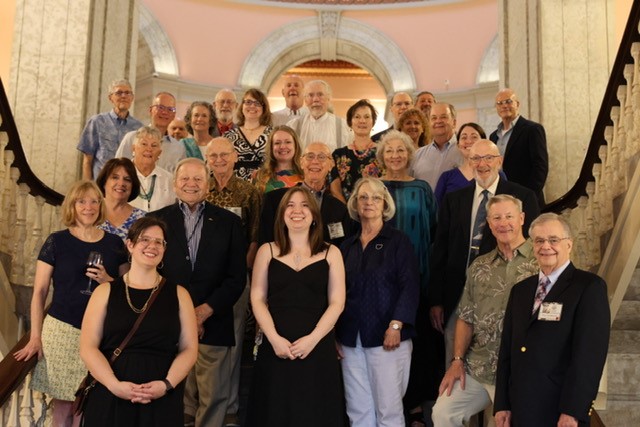 2025 Volunteer Appreciation Dinner
2025 Volunteer Appreciation Dinner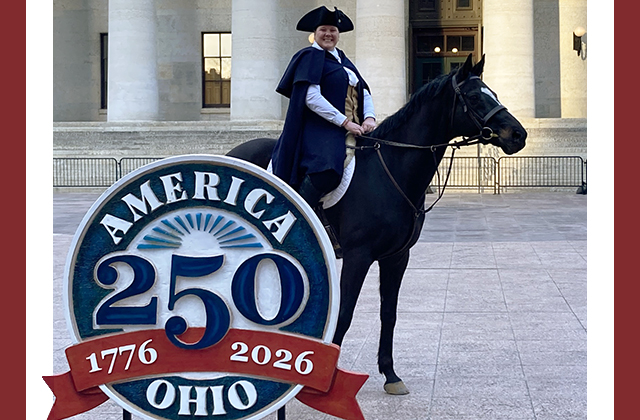 America 250-Ohio
America 250-Ohio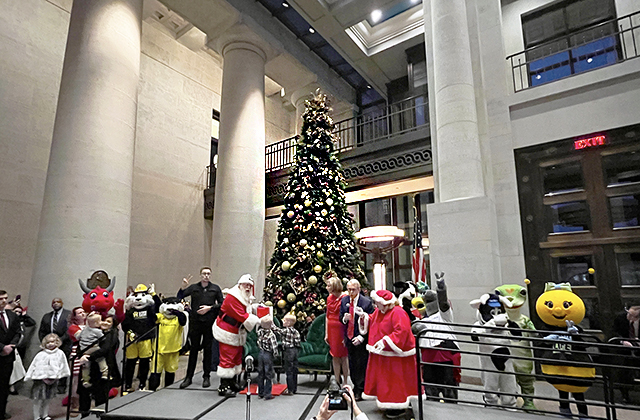 Holiday Festival and Tree Lighting 2024
Holiday Festival and Tree Lighting 2024 Holiday Santa Photos 2024
Holiday Santa Photos 2024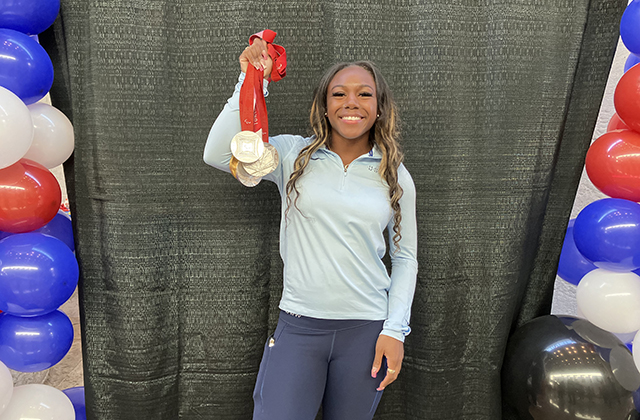 2024-11-03 Olympic and Paralympic Celebration
2024-11-03 Olympic and Paralympic Celebration Ohio Constitution Videos
Ohio Constitution Videos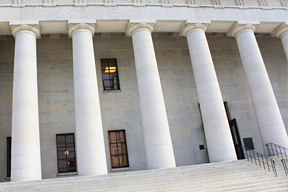 Ohio Statehouse Videos
Ohio Statehouse Videos






